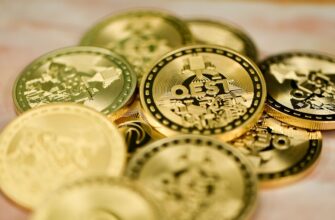- How to Guard Your Crypto Wallet Safely: A Beginner’s Step-by-Step Guide
- Understanding Crypto Wallets: Your Digital Vault
- Why Guarding Your Wallet is Non-Negotiable
- Step-by-Step: How to Guard Your Crypto Wallet Safely
- Critical Mistakes Beginners Must Avoid
- FAQ: Guarding Your Crypto Wallet Safely
- What’s the safest wallet type for beginners?
- Can I recover crypto if I lose my seed phrase?
- How often should I check my wallet security?
- Are paper wallets still safe?
- What should I do if my wallet is compromised?
How to Guard Your Crypto Wallet Safely: A Beginner’s Step-by-Step Guide
Entering the world of cryptocurrency is thrilling, but protecting your digital assets is non-negotiable. For beginners, learning how to guard crypto wallet safely is the foundation of financial security in this decentralized landscape. Unlike traditional banks, crypto transactions are irreversible, making wallet protection your sole responsibility. This comprehensive guide breaks down essential security practices into actionable steps, helping you avoid costly mistakes while building confidence in managing your digital wealth.
Understanding Crypto Wallets: Your Digital Vault
A crypto wallet doesn’t actually “store” coins like a physical wallet. Instead, it safeguards two critical elements:
- Private Keys: Secret codes granting access to your funds on the blockchain (never share these!)
- Public Addresses: Shareable identifiers where others can send you cryptocurrency
Wallet Types:
- Hot Wallets: Internet-connected (e.g., MetaMask, Coinbase Wallet). Convenient for frequent transactions but more vulnerable.
- Cold Wallets: Offline storage (e.g., Ledger, Trezor). Maximum security for long-term holdings.
Why Guarding Your Wallet is Non-Negotiable
Cryptocurrency’s irreversible nature means a single security lapse can wipe out your assets. Common threats include:
- Phishing scams mimicking legitimate platforms
- Malware stealing keystrokes or seed phrases
- SIM-swapping attacks hijacking phone numbers
- Physical theft of devices with wallet access
By implementing robust security early, you create critical barriers against these risks.
Step-by-Step: How to Guard Your Crypto Wallet Safely
1. Choose Your Wallet Wisely
- Beginners: Start with reputable hot wallets like Exodus or Trust Wallet for small amounts
- For significant holdings: Invest in a hardware wallet (cold storage)
- Always download wallets from official sources – avoid third-party app stores
2. Fortify Access Controls
- Create 12+ character passwords mixing letters, numbers, and symbols
- Enable Two-Factor Authentication (2FA) using authenticator apps like Google Authenticator – never SMS
- Use biometric locks (fingerprint/face ID) where available
3. Master Seed Phrase Security
- Write down your 12-24 word recovery phrase by hand on durable material
- Store copies in multiple secure locations (e.g., fireproof safe, safety deposit box)
- Never store digitally – no photos, cloud backups, or email drafts
4. Implement Transaction Safeguards
- Verify recipient addresses character-by-character before sending
- Start with small test transactions for new addresses
- Use wallet features like transaction whitelisting
5. Maintain Digital Hygiene
- Install antivirus software and keep all devices updated
- Never access wallets on public Wi-Fi networks
- Use a dedicated email for crypto accounts
6. Adopt Paranoid Verification Habits
- Bookmark legitimate exchange/wallet sites to avoid phishing links
- Double-check website URLs for subtle misspellings
- Ignore unsolicited “support” messages requesting sensitive data
Critical Mistakes Beginners Must Avoid
- Sharing seed phrases or private keys with anyone
- Using the same password across multiple platforms
- Storing crypto on exchanges long-term (“Not your keys, not your coins”)
- Clicking suspicious airdrop offers or “too good to be true” promotions
- Neglecting software updates for wallets and devices
FAQ: Guarding Your Crypto Wallet Safely
What’s the safest wallet type for beginners?
Start with a well-reviewed software wallet for small amounts while learning. Transition to a hardware wallet like Ledger or Trezor once your portfolio exceeds $500. Always prioritize wallets with open-source code and regular security audits.
Can I recover crypto if I lose my seed phrase?
No. Your seed phrase is the only recovery method. Without it, funds are permanently inaccessible. This is why physical, offline storage is crucial – treat it like cash.
How often should I check my wallet security?
Perform monthly security checkups: update software, review transaction history, and confirm 2FA settings. After any major exchange hack news, immediately change passwords and check for suspicious activity.
Are paper wallets still safe?
While offline paper wallets avoid digital threats, they risk physical damage and human error. Modern hardware wallets with encrypted backups offer superior protection for most users.
What should I do if my wallet is compromised?
Immediately transfer funds to a new secure wallet using a clean device. Then reset all related passwords and enable new 2FA. Report the incident to the platform’s support team.
Final Tip: Security evolves. Subscribe to crypto security newsletters and revisit your protocols every six months. By making these practices habitual, you’ll transform from a vulnerable beginner into a confident crypto guardian.








